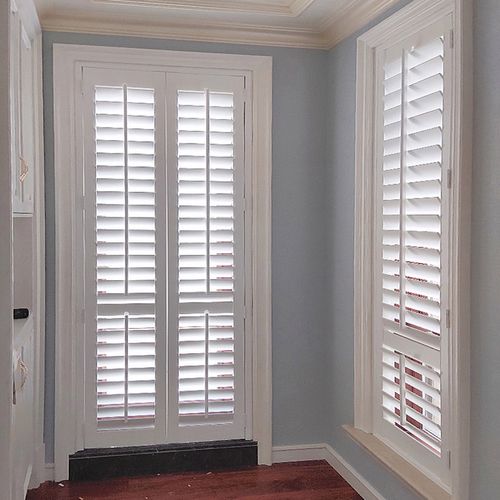Breathable windows, originating from European royal palaces where they were installed in the lower parts of window frames before the advent of glass windows, allowed fresh air and precious sunlight into rooms while folding away seamlessly to blend with regal decor. Today, these windows are chosen primarily for their light control, privacy enhancement, and aesthetic appeal, enjoying popularity in Europe and America as a high-end window dressing.

Breathable Window Types:
1. Based on Shape and Structure: Rectangular (standard), Arched top, Circular or Semi-Circular, Bay, Peacock Fan-shaped, Sliding Doors, French Doors, among others.
2. Categorized by Material: Wooden breathable windows, Plastic ones, Bamboo alternatives, and Aluminum alloy versions.
The Construction of Breathable Windows
Depending on their shape and intended use, breathable windows consist of various components such as outer frames, louvers, side frames, upper and lower rails, partitions, pull rods, T-columns, and hardware like hinges. For sliding doors, additional elements include tracks and associated fittings.
Expert Tips for Purchasing Breathable Windows:
1. Check for Compactness and Smooth Operation: Assess whether there is a tight fit between the profiles and accessories, ensuring that the window operates smoothly without excessive noise. Inferior quality designs may result in noisy and jerky movements.
2. Verify Use of Secure Pressure Steel Rivets: Some manufacturers might opt for regular steel rivets to cut costs, which could lead to instability and potential detachment over time. It's crucial to confirm the use of solid pressure steel rivets for enhanced durability.
3. Confirm Compliance with National Safety Standards: Since frameless breathable windows rely heavily on the glass, it should be certified safe. Beware of suppliers who utilize ordinary tempered glass or semi-tempered glass to reduce expenses.
4. Evaluate Manufacturer Expertise and After-Sales Service: The design, production, and installation of breathable windows require considerable technical expertise. Ensure that the manufacturer has the skills to handle complex installations such as uneven terraced balconies. Moreover, a robust after-sales service system is an essential cornerstone for guaranteeing the quality and longevity of the product.







